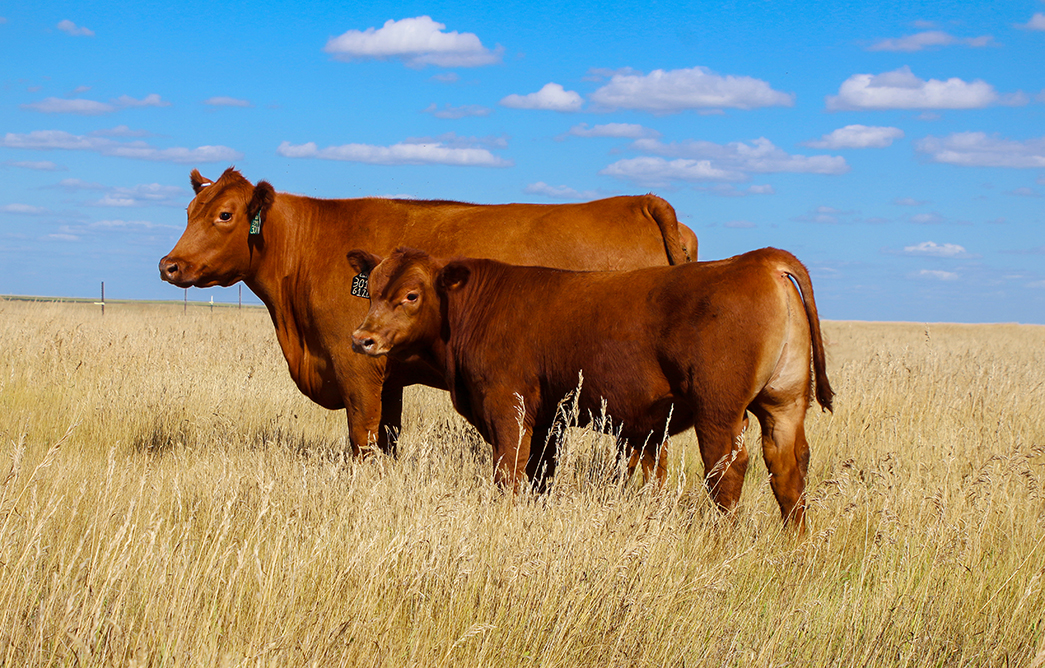 Results from a detailed survey of cow-calf veterinarians compiling their recommendations on vaccine protocols, health management, and production practice recommendations were recently published in The Professional Animal Scientist, the publication for the American Registry of Professional Animal Scientists. The study, “A Survey of Recommended Practices Made by Veterinary Practitioners to Cow-Calf Operations in the United States and Canada,” was initiated by the Red Angus Association of America in partnership with the Kansas State University Agricultural Experiment Station, and provides valuable insight into how these practices can be best applied in individual cowherds.
Results from a detailed survey of cow-calf veterinarians compiling their recommendations on vaccine protocols, health management, and production practice recommendations were recently published in The Professional Animal Scientist, the publication for the American Registry of Professional Animal Scientists. The study, “A Survey of Recommended Practices Made by Veterinary Practitioners to Cow-Calf Operations in the United States and Canada,” was initiated by the Red Angus Association of America in partnership with the Kansas State University Agricultural Experiment Station, and provides valuable insight into how these practices can be best applied in individual cowherds.
Gary Fike, RAAA Director of Commercial Marketing and lead author on the publication, stated, “Our purpose in conducting this survey was to learn what practicing veterinarians nationwide are recommending to their clients. We know that the No. 1 cause of death loss in feedlots is respiratory disease. Despite the progress that has been made in the animal health arena at the farm and ranch level, we still have a long journey ahead keeping calves healthy further down the supply chain. There are a number of factors that play into this issue, including weaning protocols, vaccine use and timing, and proper intervals for administering the preventative vaccines. We addressed the gamut of those issues through this survey.”
Vaccination and health-related management are vitally important to maintaining a thriving herd and in getting calves ready to leave home, regardless of breed, age or location. Unsurprisingly, 99 percent of surveyed veterinarians recommended vaccinations for IBR at the first processing before weaning, 98 percent recommended BRSV and 96 percent recommended BVD Types 1 and 2. Those recommendations didn’t vary much when transitioning to post-weaning processing, as BVD Type 2 and IBR were recommended by 97 percent and BVD Type 1 and BRSV were both recommended by 96 percent of surveyed veterinarians. Additionally, 99 percent of veterinarians recommended annual booster vaccinations for the cow herd, particularly for IBR, BVD Type 1 and 2, leptospirosis , PI-3 and BRSV.
It’s important to note that the large majority of veterinarians recommended using modified live virus vaccines for processing calves, both pre-weaning (90 percent) and post-weaning (93 percent).
Results from the survey indicated that in regards to production practices, a majority of veterinarians (83 percent) recommended that all family members and employees involved with the operation be trained in animal handling and 75 percent of veterinarians recommended administering a growth implant at branding.
When it comes to managing and marketing calves, 60 percent of veterinarians recommended backgrounding/feeding calves before marketing and 54 percent recommended that calves be bunk broke prior to marketing or shipping. The two most common weaning methods recommended by surveyed veterinarians were a specific number of days before selling (64 percent) and fence-line weaning (57 percent).
“The value of this research is in its application in individual cow herds,” said Fike. “There is a plethora of research regarding recommendations from feedyard veterinarians, but much less at the cow-calf level, which is where a calf’s lifetime of good health must begin. We encourage producers to read the full report and then discuss the key findings with their veterinarians.
Source: Red Angus Association of America



Leave A Comment